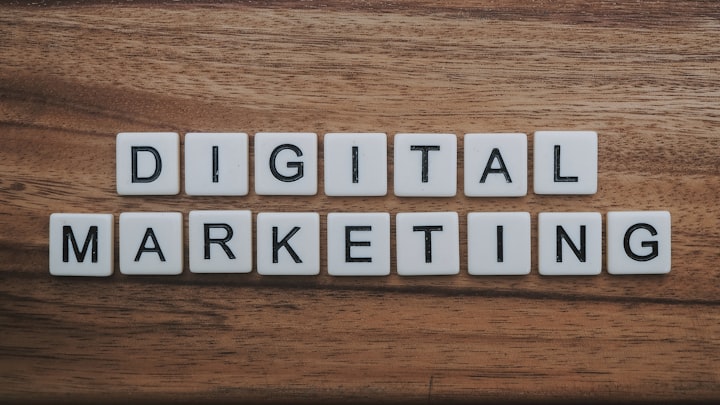Try These Tips To Improve Your Content Marketing Efforts.
10 Easy Content Marketing Tips to Improve Your Results

A. A practical guide to designing personas and using the conversion tunnel concept.
1. Designing your personas: What is a persona?
The persona helps to understand the behavior of its customers on digital channels and thus to better guide the production of content to respond as precisely as possible to their needs and concerns.
It is therefore not a real customer, nor a company function, nor a target market, but a fictional character, defined in depth based on the following characteristics:
- Problem: what is his problem or pain point to solve?
- Touch points: where does he do his research and how will he make up his mind?
- Language: how do they express their needs and feelings?
- Decision criteria: what aspects should be used to convince him?
- Success factors: what does the persona hope to gain from the service/product?
- Barriers to purchase: what are the resistances he might show?
- Biographical and demographic data: age, origin, etc.
How to create a persona?
First of all, keep in mind that the persona evolves and is not an end in itself: it aims to generate content ideas and ultimately to get sales.
Either you are creating your company and don't know your customers yet, or you already know about them because your company already exists.
In the first case, you will probably need to conduct a survey and collect demographic and behavioral data. Google Surveys may be able to help you with this.
In the second case, you will try to collect information about your customers, either by interviewing them directly, by analyzing their behaviors on the Web, or by analyzing the competition.
If your data is homogeneous, then a single persona will suffice. But if you see significant differences, then you will need to create several.
How to use a persona?
The creation of a persona allows you to avoid the mistake of creating content that is too self-centered on your brand and its offers. We have to start from the assumption that our targets don't necessarily know our brand or have it in mind when they orchestrate information searches on the Internet.
In other words, the persona is used in close combination with the conversion tunnel. With the persona, you can imagine all the steps from the discovery of your brand to the purchase decision.
2. Understanding the concept of the conversion tunnel

The three phases of the marketing funnel
The conversion tunnel, also called funnel (contraction of "fun" and "tunnel"), has three phases: discovery, evaluation and decision.
During the discovery phase, Internet users are not yet leads. They are researching based on their problem to be solved. Content that inspires, guides or educates them will be used here.
In the evaluation phase, targets are interested in your proposal, but compare it with other offers. Blog posts on how to choose a service or product will undoubtedly help them.
Finally comes the decision phase, during which the decided target must be converted into a lead and a customer. Testimonials from satisfied customers, but also comparisons or precise technical data sheets will come to the rescue.
The limits of the conversion tunnel
This tunnel (inspired by the AIDA model) is simplifying and is no longer completely realistic in the Internet age. Why not? Because the customer journey is no longer as linear as it used to be.
Nowadays, the channels used are varied and the customer journey can look like a real zigzag in a matrix that is unique each time, with each customer and each brand having different contact points: brochure, blog, webinar, etc.
In order to have a more global vision, we should also take into account the maturity level of the prospect, as well as his user character (which pure players or usage brands manage to do well) and the metrics. This leads us to propose the marketing lifecycle model.
3. Organize content around the marketing lifecycle

The marketing lifecycle is more precise, adding a step to the conversion tunnel and designing each step dynamically.
"Reach" or discovery
You need traffic from quality content, if possible authoritative in the field. Your objectives at this stage: to create visibility and to help the personas progress in understanding the issue.
"Act" or evaluation
Your objective: to get the lead into a conversation process in order to better understand their expectations and convince them to act (if possible quickly).
"Convert" or decision
On the verge of buying, the lead is about to trust the brand. Your objective: convince them that your solution is the best and provide them with all the information they need to make a comparative analysis and ultimately choose you.
"Engage" or enchant the customer relationship
The lead has become a customer. Now you have to ensure their satisfaction, help them on a daily basis and succeed in transforming them into advocates of your brand, capable of pleading your cause.
4. Content mapping by persona
Thanks to these four steps, you will be able to design a precise plan for the content to be created and distributed. Each persona will of course evolve at its own pace, according to its own needs, etc. But you will have an operating mode that will allow you to act more efficiently. The objective is to activate the virtuous circle of the marketing life cycle.
B. Promote and amplify its contents

1. Understanding the POEM concept
Thanks to this method, you can converge communication channels to better reach your targets, be better able to allocate budgets by knowing clearly where you want to be visible and measure your ROI.
Owned Media: how to make the most of your content?
The brand's Owned Media is the essential foundation on which the whole edifice rests. Owned media channels are totally controllable by the brand. It is the brand that decides what content to publish, in what format and how often to publish it.
To multiply your chances of success, you must maximize the use of your content and link it to each other. Stéphane Truphème gives the following example of a guide (e-book) that should be reused in the following way:
- Extract optimized blog posts in which you place call-to-actions that encourage people to download the guide;
- Produce snacking content from the created blog posts and distribute them on your social media;
- Send the articles to your subscribers via your newsletter;
- Turn the articles into podcasts;
- Print the guide to distribute it in your physical contact points;
- Present the guide in one or more webinars;
You can then reuse the content and complement it with another (a podcast or a video as a blog post, etc.).
Earned Media: how to generate word of mouth?
Attempting to get readers to spontaneously share content is not enough. Earned media requires constant stimuli to be fertilized.
Here are some tips given by the author:
- Offer teasers for Twitter (via clicktotweet for example);
- Improve your articles for SMO;
- Recognize and tag influencers;
- Follow influencers and share their content;
- Conduct a video or audio interview, for example;
- Organize contests;
- Ask for experience sharing;
- Suggest to join a Slack (or other) community;
- Use your imagination to spread your content as widely as possible!
Paid Media: how to enhance your Owned?
Advertising should not be totally discarded. New formats and new practices allow it to be effective again. In particular, it is a matter of linking the Paid to the Owned.
Here are some actions that could be implemented:
- Sponsor a few articles on Facebook to get them in the spotlight;
- Promote viral articles on its main social media channels;
- Create a Google Ads campaign for the launch of an e-book;
- Place some content in specialized magazines;
2. Content marketing and search engines

The little history of search engines : Before 1995, search engines (such as Lycos, Yahoo! or Altavista) suffered from a major flaw: they did not identify content well and therefore gave answers that were often not very relevant to Internet users' queries.
After 1995, Google came along and changed the situation: from now on, the relevance of the answers is increased thanks to a system based on the popularity of the contents, i.e. on the number of hypertext links that point to a given page.
Understanding how a search engine works
Imagine a subway network. Each station is a document (a Web page or any other type of document). To find you, robots explore or "crawl" each station by following the countless links that connect them.
To store and analyze all this data, large data centers or "datacenters" have been created around the world.
Once indexed and analyzed, the pages become visible in the SERP and form potential answers to questions asked by Internet users. The SERP ranking will be produced based on the popularity of each page.
Understanding the growing importance of search engines
SEO leads to a much higher conversion rate than other marketing channels. Logically, it has the most positive relationship between the rate of presence and the budget of the different marketing channels. SEO thus provides the highest return on investment, i.e. the highest ratio of revenue generated to budget spent.
SEO is much more profitable than PPC
PPC, or "pay per click," which is the paid rental of a top spot in the SERP (when you see "ad" at the top of the SERP), is much less profitable in the long run. Once you stop paying the search engine, you fall back into the abyss of results.
SEO may take longer to show results, but the results are much more sustainable and therefore profitable.
SEO is a quality process
Optimizing your content for search engines means increasing its quality. Why is this? Because search engines - Google in the lead - use more and more criteria to check the relevance and quality of content. One objective: to satisfy Internet users!
Here are some criteria (among more than 200) that are taken into account in the ranking of a site by Google:
- The originality of the content (no duplicate content);
- Inbound links;
- Domain authority;
- The loading time of the site;
- The responsive design (adaptation of the site to cell phones and tablets);
- The relevant use of keywords;
- The length of the contents;
3. How to find high potential keywords?
As we have seen, the SEO must be taken into account from the phase of content ideation. It is therefore necessary to make sure to develop an effective keyword research. How to do it? To find powerful keywords, you can explore the :
- Your company's field, i.e. its universe (fishing, fashion, gastronomy, etc.);
- Themes addressed, i.e. the main topics that arise from the domain in question;
- Problems, needs or desires of the personas - what questions do they have?
- Semantic cocoon, i.e. the complete tree structure of keywords and contents that characterize and encircle your main themes;
- Tools needed to research long tail keywords, such as Google's search suggestions or software such as Ubersuggest (with a free version) or SEMrush (paid).
Google now uses featured snippet, also called zero positions to give an answer directly to the user. This can generate a problem for sites that create content: as the user finds his answer directly, he does not need to click and enter the site. However, we should not be afraid of this trend, but rather find strategies to get around it.
4. Social media
You have to ask yourself two questions in order to choose the right networks and anticipate the uses of the platforms: where is my audience and what are the uses of my clients on the social media they use? Once this step is completed, it is important to understand the underlying mechanisms of the selected media.
There's no need to be everywhere, so you might as well be present intelligently, where you need to be.
Sponsored content
There's no point in overdoing it: it's better to simply give a paid boost to the content that works best (i.e. the ones that have already reached their organic reach, that is, a good degree of popularity in a natural way, without advertising help).
Social media management platforms
To help you in the - very time-consuming - activity of publishing content and managing your communities, you can take help from the following tools (among others): Hootsuite, Agorapulse, Buffer, Limber, Sociallymap, etc.
5. The newsletter
It is becoming trendy again! Don't neglect it to promote your contents. Try, of course, to increase the number of your subscribers. Do all this while respecting certain rules, such as:
- Respect of the RGPD (General Data Protection Regulation) ;
- Automation of the sending (use of platforms such as Mailchimp or Sendinblue, for example);
- Relevance of content;
- Clear value proposition
- Easy unsubscribing;
- Segmentation of readers (diversification of themes);
- Measurement and analysis of subscriptions/unsubscriptions.
Make sure your newsletter is responsive and, above all, don't forget to link it to your company's blog.
6. Paid content promotion techniques
Google Ads (Bing Ads and Yahoo Ads) . This is the technique of putting forward the contents on the search engines (Google, Bing or Yahoo) that we have already talked about, or on Google's partner sites (Google AdSense).
Sponsored article
"You can solicit bloggers and influencers who are related to your industry to invite them to write an article that talks about your brand, your expertise or your solutions." (Content Marketing, p. 223)
This is also known as guest posting. This potentially allows you to reach a new audience. The ROI of this practice is not easy to measure.
"Content Ads or sponsored content
You can create ads on specialized publishing sites that will make you better known to receptive audiences.
Web scraping
This is a "wildcard" prospecting technique that aims to collect data from people who might be interested in your services, in order to send them a message inviting them to consult your content.
About the Creator
Emma Randy
Sharing the best self-improvement tips and personal growth ideas that will help you build a fulfilling life.
My WebSite






Comments
There are no comments for this story
Be the first to respond and start the conversation.